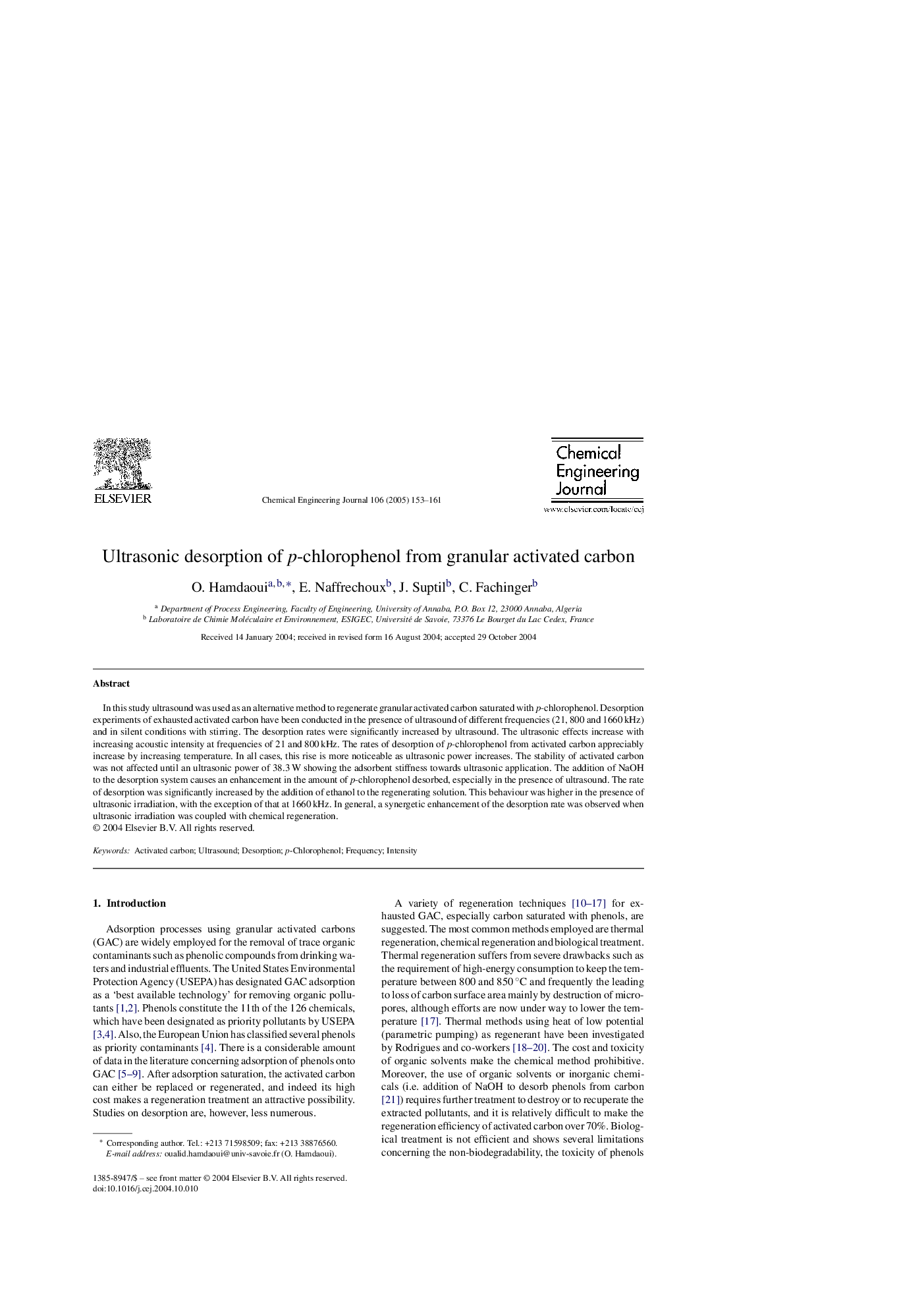| Article ID | Journal | Published Year | Pages | File Type |
|---|---|---|---|---|
| 10261063 | Chemical Engineering Journal | 2005 | 9 Pages |
Abstract
In this study ultrasound was used as an alternative method to regenerate granular activated carbon saturated with p-chlorophenol. Desorption experiments of exhausted activated carbon have been conducted in the presence of ultrasound of different frequencies (21, 800 and 1660Â kHz) and in silent conditions with stirring. The desorption rates were significantly increased by ultrasound. The ultrasonic effects increase with increasing acoustic intensity at frequencies of 21 and 800Â kHz. The rates of desorption of p-chlorophenol from activated carbon appreciably increase by increasing temperature. In all cases, this rise is more noticeable as ultrasonic power increases. The stability of activated carbon was not affected until an ultrasonic power of 38.3Â W showing the adsorbent stiffness towards ultrasonic application. The addition of NaOH to the desorption system causes an enhancement in the amount of p-chlorophenol desorbed, especially in the presence of ultrasound. The rate of desorption was significantly increased by the addition of ethanol to the regenerating solution. This behaviour was higher in the presence of ultrasonic irradiation, with the exception of that at 1660Â kHz. In general, a synergetic enhancement of the desorption rate was observed when ultrasonic irradiation was coupled with chemical regeneration.
Related Topics
Physical Sciences and Engineering
Chemical Engineering
Chemical Engineering (General)
Authors
O. Hamdaoui, E. Naffrechoux, J. Suptil, C. Fachinger,
